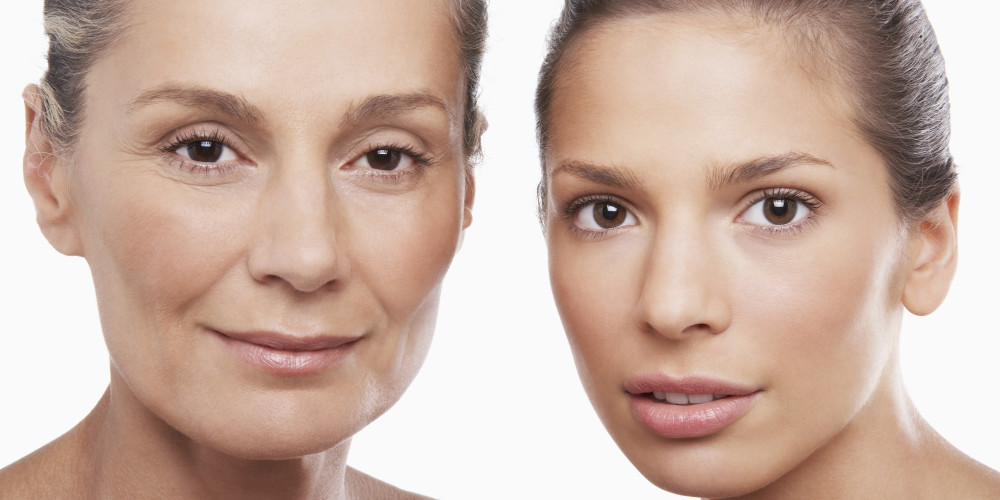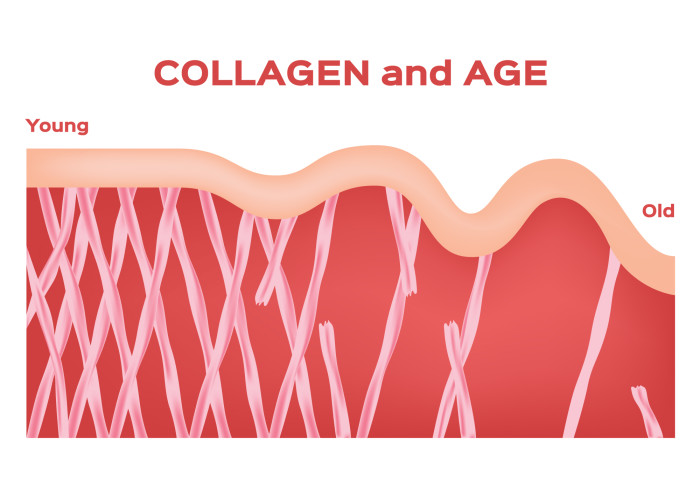How to Prevent Collagen Loss as You Age

By Eileen Spatz
“Your skin is gonna look like shoe leather by the time you are 30,” admonished my mother back in the day when I would lavishly apply baby oil to my skin and bask for hours in the sun. Mom was on to something, that’s for sure.
While shoe leather might be a bit hyperbolic, the fact is that sun exposure causes photoaging that is cumulative, hiding neatly under the surface until, bam!, one day we who spent too many hours coated in Bain de Soleil or cocoa butter suddenly see the fruits of our unfortunate sunbathing practices. Seemingly without warning, our faces are pocked with the telltale brown age spots, fine lines, and premature sagging—signs our collagen is bidding us a fond farewell.

What is this collagen stuff anyway?
Collagen is the unseen structural protein that provides the fibrous architecture that holds up the outer layer of our skin, keeping it looking smooth and plumped up. That dang aging process is responsible for a continual decline of about 1% of collagen a year starting in our thirties. Our lifestyle choices contribute to the demise of said collagen, including the aforementioned excessive sun exposure, a poor diet, being sedentary, smoking, and ingesting too much alcohol. On top of those factors, genetics can also imprint a predestined effect on our personal aging process.
Lifestyle choices to prevent collagen loss
With all these things working against our collagen levels, what can a person do to delay or prevent collagen loss as the years go by? Thanks be to modern cosmetic procedures, used in tandem with a healthy lifestyle and lots of sunscreen, there are several preventative, or restorative, actions available. These include:
Retinol. A prescription-strength retinol (vitamin A) cream has antioxidant effects that can help to heal the collagen breakdown. Retinol can improve both the visible skin texture, as well as provide a positive effect on collagen metabolism. Retinol-based treatment can take about six weeks for noticeable changes in skin appearance.
Laser treatments. Laser resurfacing, such as fractionated (Fraxel) lasers emit pixilated light onto the skin, or Ultherapy, a laser treatment that uses ultrasound treatment, both which can resurface the skin. This results in a wound-healing process that can leave skin looking rejuvenated by stimulating collagen, enzyme, and cell production. Recovery time can be 10-21 days for complete healing.
Dermal fillers. Hyaluronic acid-based dermal fillers, such as Restylane and Juvederm, can be strategically utilized to help fill in lines and wrinkles. In addition to the visible results, these fillers have been shown to actually stimulate collagen production over time. There may be mild bruising and swelling for a couple of days following the procedure.
Microdermabrasion. Microdermabrasion uses fine crystals to exfoliate and polish the superficial layer of skin. It can stimulate the production of collagen, while improving the appearance of texture, while also improving the ability of topical treatments, like retinol-based products, to penetrate. For best results, several sessions are needed, and the recovery time is about two days following each session.
Chemical peels. A more invasive procedure, a chemical peel uses an exfoliating chemical that is applied to the skin, causing it to blister and peel. The wound healing process results in renewed collagen production, and the new layer of skin shows fewer fine lines, skin discoloration, and other signs of photoaging. Recovery time is 7-14 days.
By accessing these tools through the professional services of a board-certified plastic surgeon or dermatologist, it is absolutely possible to improve the production of collagen and enjoy fewer telltale signs of aging. Shoe leather, be damned!
